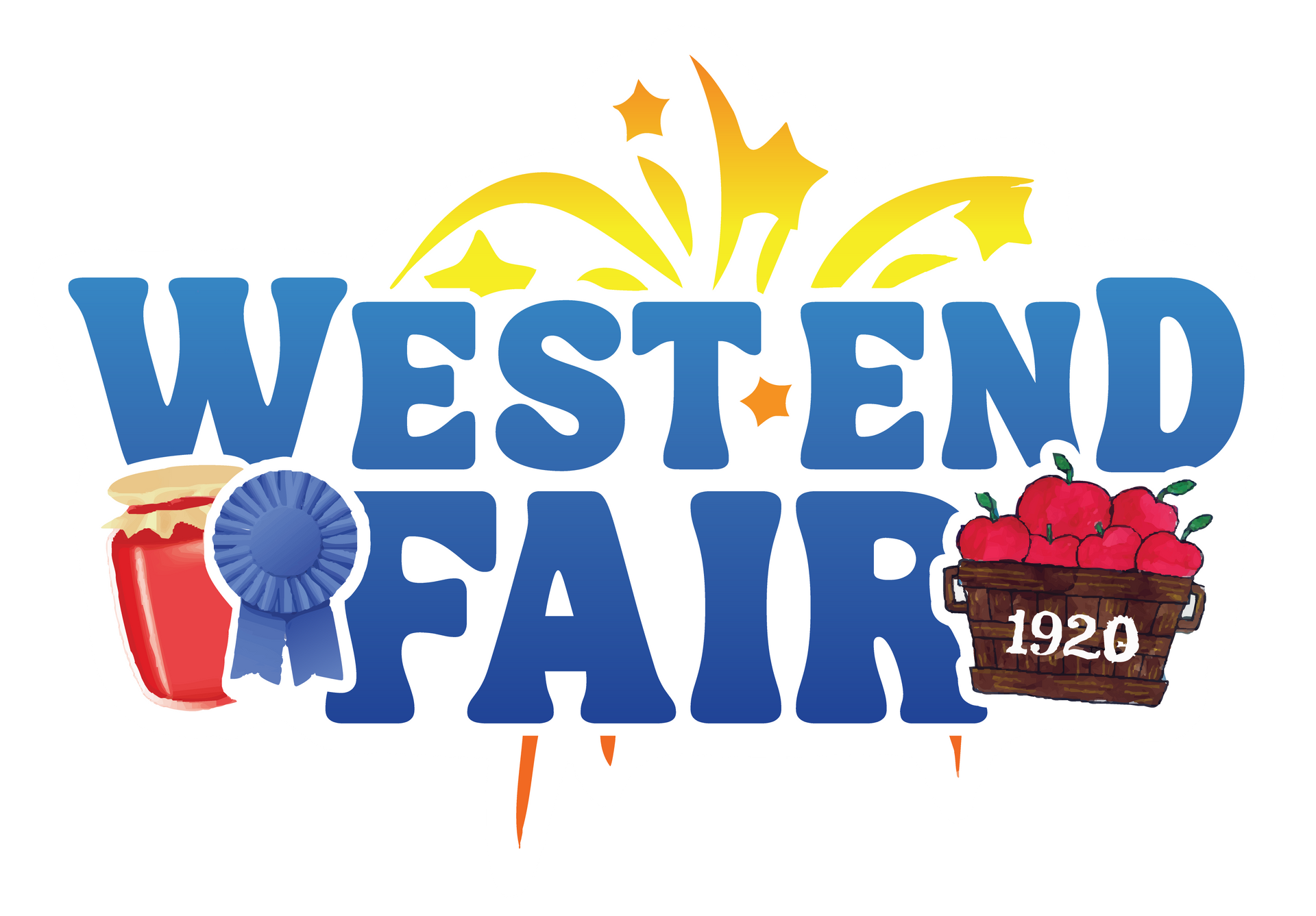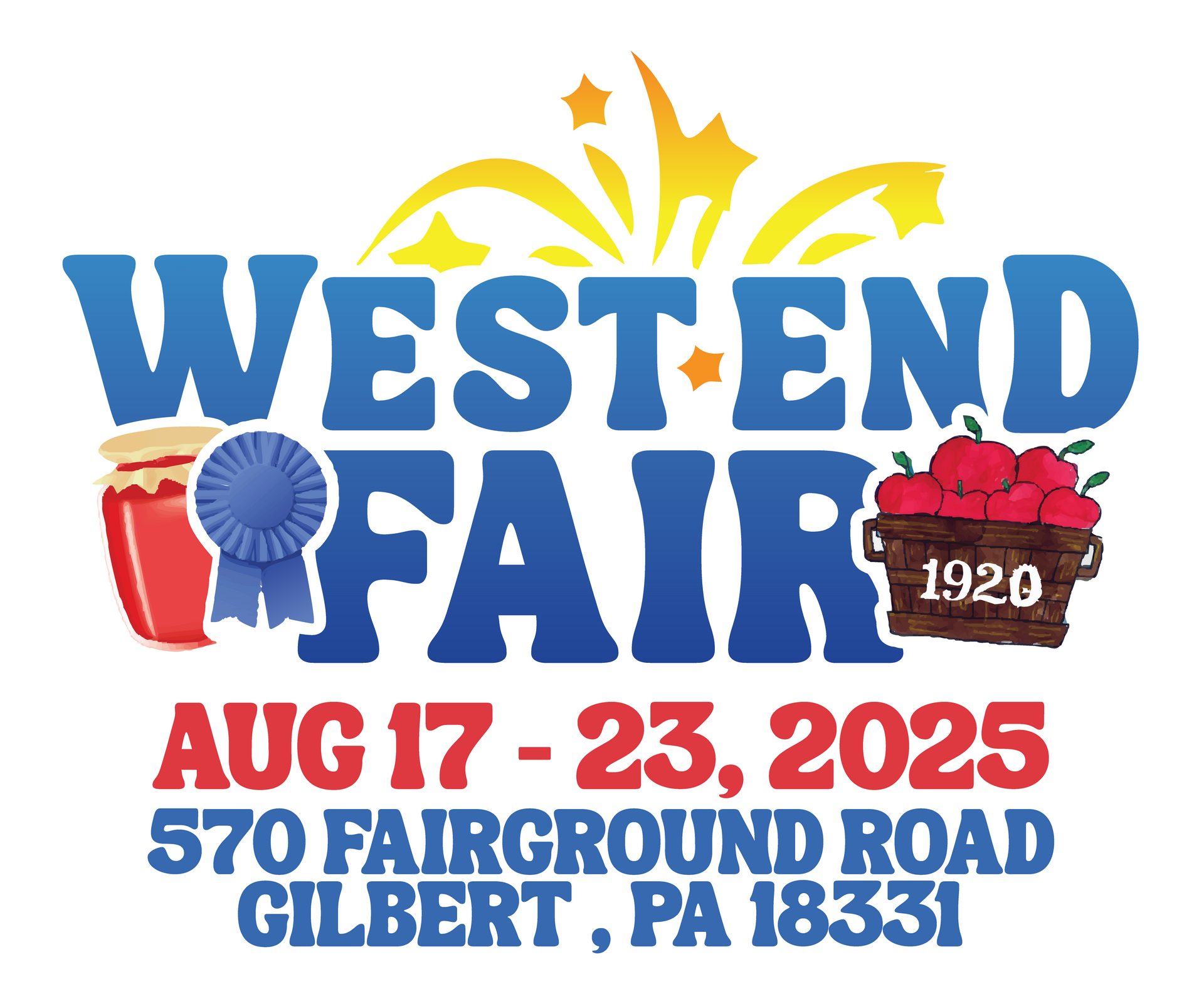
fair history
A Proud Beginning: The Birth of the West End Fair
The West End Fair began as the Monroe County Agricultural Society and held its first event on Thursday, September 2, 1920, at Weir Lake. The idea was sparked in 1919 at a meeting of the Weir Lake Development Company when Frank Koehler proposed an annual showcase of local farm products. He personally contributed $100 and pledged to secure another $150 in advertising if the company matched his efforts. In total, $500 was raised, and the West End Fair was born. Nearly 4,000 attendees enjoyed that first fair.
Seven townships—Eldred, Chestnuthill, Polk, Hamilton, Ross, Jackson, and Tunkhannock—originally came together to organize the fair. Tunkhannock withdrew in 1925, but the remaining six townships continue to contribute, each with six directors serving on the fair’s leadership team.
Establishing Identity and Finding a Home
In its second year, the fair was renamed the West End Agricultural Society, establishing a more local identity. It was also decided that the fair would always be held on the last Wednesday of August, a tradition still honored today.
By 1927, the directors and officers had purchased their own land in Gilbert, PA. With that, the West End Fairgrounds became the permanent home of the fair. The grounds, shaded by towering oaks and hemlocks, have long been celebrated for their natural beauty and cool breezes—even during the heat of late summer.
Celebrating Heritage and Local Flavor
Early fairs featured fascinating historical displays, including Native American arrowheads, Civil War and Revolutionary War artifacts, colonial bread baskets, handmade quilts, and wooden shoes. Local bands from nearby communities like McMichaels, Gilbert, and Wind Gap entertained visitors, along with minstrel shows, vaudeville acts, and whimsical contests like cakewalks, tugs of war, nail-driving competitions, and horseback relay races.
In 1930, Senior Citizen Day was introduced, honoring the oldest man and woman in attendance. Today, it remains a beloved tradition, offering reduced admission, special entertainment, and prizes just for seniors.
War, Recovery, and a Growing Legacy
The 1940s brought hardship with World War II, and no fair was held in 1942 or 1943. However, the fair's kitchen gained legendary status during this decade. Operated by the fair association, it served hearty helpings of pork and sauerkraut, along with homemade pies. In 1947 alone, 100 gallons of sauerkraut were served in one day! Though the kitchen is now managed by others, this iconic dish remains a staple of the fair.
From One Day to a Full Week of Fun
The 1970s brought major growth. What began as a one-day event had grown to a six-day fair by 1975. Infrastructure improvements followed, including a new two-story office building and tiered bleachers for popular events like tractor pulls.
Tragedy struck in 1978 when a fire destroyed the main commercial exhibit building, resulting in the loss of valuable contents. While the building was replaced the following year, its historical charm could never be recreated. By 1980, multiple entrance gates had been installed to accommodate growing crowds.
Expanding for the Future
To solve parking issues, the fair association purchased an additional 13 acres in 1986. A year later, construction began on a brand-new grandstand, increasing spectator seating by more than 3,000. In 1989, country star Charley Pride became the first major artist to perform at the fair.
In 1994, the main stage was enhanced with a newly designed fair logo, generously donated by a fair director and their spouse. That same decade saw the expansion of the fairgrounds to accommodate up to 200 vendors. The old fair office was converted into a museum in honor of the fair's 75th anniversary in 1996, featuring rotating exhibits like antique quilts, tools, and holiday displays. The museum has since expanded to a 50-by-100-foot building, showcasing the rich history of the fair and community.
A Living Tradition
From its humble beginnings of 3,000 attendees to today’s 180,000+ visitors, the West End Fair has experienced remarkable growth and transformation. Yet, its core values remain unchanged.
As stated in the original fair premium book:
“The object of the fair is: to promote a healthy interest in the West End of Monroe County in the raising of thoroughbred horses, cattle, sheep, swine, and poultry; to increase the quality and quantity of grains, fruits, and vegetables; to assist in the social uplift of the West End by bringing all classes of rural life together to vie with each other in exhibiting the best that the West End can produce; finally to afford a day of recreation and pleasure.”
We honor these roots while continuing to grow and evolve—preserving the past while developing the future.
Past Presidents of the West End Fair
1920 Lafayette Everitt, Kunkletown
1921 F.W. Deibert, Gilbert
1922 William H. Shafer, Gilbert
1923 Edwin C. Howell, Kunkletown
1924 Gary Sprigle, Saylorsburg
1925 Howard A. Shupp, Effort
1926 William E. Keller, Kresgeville
1927 P.C. VanBuskirk, Saylorsburg
1928 - 1932 Raymond A. Frantz, Saylorsburg
1933 Roy K. Howell, Kunkletown
1934 - 1946 Amos A. Kresge, Gilbert
1947 - 1949 Lloyd Frailey, Stroudsburg
1950 - 1953 Floyd C. Altemose, Saylorsburg
1954 - 1960 Maurice E. Kresge, Gilbert
1961 - 1973 Paul R. Everett, Kunkletown
1974 - 1977 Russell Scheller, Kunkletown
1978 - 2018 Donald Everett, Saylorsburg
2018 - Present Dale Greenzweig Jr., Kunkletown

Fair Milestones Through the Years
1920
Thursday, September 2nd
Between 3,000 and 4,000 people attended the first West End Fair, held at Weir Lake; admission was 25 cents per car.
1921
The decision was made to hold the fair on the last Wednesday of August.
1923
The first athletic events were held. Some of these events were the women's nail-driving contest, children's shoe-lacing contest, and tug-of-war between farm hands and city slickers.
1927
Land was purchased and the fair was moved to its present location. This is also the same year that the kitchen was built.
1934
There was mention made of a midway and carnival committee.
1938
The first mention of a ferris wheel and whirling swings was made. A new road was also built from Rout 209 into the fairgrounds.
1942 & 1943
There was no fair these years due to World War II.
1956
Rescue demonstrations were provided by the Monroe County Council of Civil Defense.
1961
All of the buildings were painted white. Admission at the time was $1 per car.
1964
Price of admission was changed to 50 cents per person, with free parking.
1970
The fair is now a three day event.
1971
The 50th anniversary of the fair is celebrated; the fair is also now five days long.
1973
The first year for the garden tractor pulling contest.
1974
The first year for sanctioned tractor pull.
1975
The fair is expanded to six days.
1978
Wednesday, August 30th at 5:30 AM
A fire caused by an electrical short destroyed the main commercial exhibition building.
1980
Blue Ridge Hook & Ladder served the first Italian meatball sandwich at the fair.
1982
The first Vesper Service was held.
1983
Elephant Ears made their debut.
1986
The Royal Lipizzan Stallions appeared.
1988
The grandstand was completed.
1989
Charlie Pride appeared in the arena.
1990
The High Diving Mules (and the animals' rights protestors), Charlie Daniels and Tammy Wynette all appeared.
1992
Chubby Checker, Tanya Tucker and Eddie Rabbit performed.
1994
The PA State Police Mounted Detail patrolled the fairgrounds.
1995
Ricky VanShelton highlighted.
1996
The 75th anniversary brought a seven day event and the opening of the museum.
1997
The fair's first website was launched.
1998
The arena hosted Lorrie Morgan.
1999
Billy Ray Cyrus performed.
2000
Jo Dee Messina appeared in the arena.
2002
Mel Tillis performed.
2004
All the roads in the fairgrounds were given names.
2005
Our fair was named Zone II Fair of the Year.
2006
The first time ever that the Saturday date of the fair was cancelled due to rain.
2011
Hurricane Irene caused opening day to be cancelled; the fair was extended one day to the following Sunday.
2013
The first West End Fair's Got Talent winner was Katie Rubino.
2015
Crowned the first West End Fair Queen, Krista Borger.
2016
An antique farm-to-market buggy is donated & restored.

